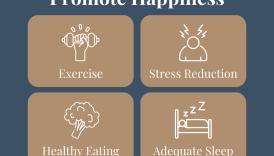Wellness Warriors: Embracing a Lifelong Journey to Better Living

Understanding Wellness Warriors
In today’s fast-paced world, the term “Wellness Warriors” has emerged to describe individuals who actively pursue well-being in every facet of their lives. These warriors are not just focused on physical health; they recognize the importance of mental, emotional, and spiritual balance as well. For instance, consider Sarah, a busy mom who juggles work, family, and personal wellness. She integrates daily yoga, mindful eating, and quality family time into her routine, showcasing how one can lead a balanced life.
- Wellness Warriors: Embracing a Lifelong Journey to Better Living
- Understanding Wellness Warriors
- Importance of Embracing a Lifelong Journey
- The Mind-Body Connection
- Mental Health and Well-being
- Benefits of Physical Wellness
- Nourishing Your Body
- Healthy Eating Habits
- Importance of Hydration
- Cultivating Mindfulness
- Practices for Inner Peace
- Managing Stress Effectively
- Physical Activity and Fitness
- Importance of Exercise
- Finding the Right Workout Routine
- Sleep and Restoration
- The Impact of Quality Sleep
- Creating a Relaxing Bedtime Routine
- Building Resilience
- Embracing Challenges
- Strategies for Overcoming Setbacks
- Social Connections and Support
- Importance of Community
- Nurturing Relationships
- Embracing Self-Care
- Prioritizing Your Well-being
- Practicing Self-Compassion
- Holistic Wellness Approaches
- Integrating Mind, Body, and Spirit
- Exploring Alternative Therapies
- Setting and Achieving Goals
- SMART Goal Setting
- Celebrating Milestones
- Embracing Sustainable Lifestyle Changes
- Creating Healthy Habits
- Maintaining Long-Term Wellness
- Mindful Technology Use
- Balancing Screen Time
- Utilizing Tech for Well-being
- Mindful Eating
- The Art of Mindful Eating
- Building a Healthy Relationship with Food
- Embracing a Lifelong Wellness Journey
- Continuing Your Growth
- Inspiring Others to Join You
Importance of Embracing a Lifelong Journey
Embracing wellness is not a one-time endeavor but a lifelong journey. Here’s why this mindset is essential:
- Continuous Growth: Just as Sarah adapts her wellness practices as her needs change, individuals can evolve their strategies over time.
- Resilience Building: Life’s challenges are inevitable. A wellness-oriented mindset fosters resilience, allowing individuals to bounce back stronger.
Ultimately, the journey to wellness is ongoing, and each step taken enriches one’s life experience.
The Mind-Body Connection
Mental Health and Well-being
As we delve into the mind-body connection, it’s essential to acknowledge how deeply intertwined our mental health is with our overall wellness. When individuals prioritize their mental health, they often realize significant improvement in other areas of life. For example, when Tom began practicing mindfulness meditation, he noticed not only a reduction in stress but also enhanced focus and productivity at work. Key Aspects of Mental Health:
- Emotional Awareness: Understanding and managing emotions.
- Stress Management: Techniques that alleviate daily pressure.
- Positive Relationships: Building connections that foster support.
Benefits of Physical Wellness
On the other hand, physical wellness plays a crucial role in nurturing mental health. Regular exercise, for instance, releases endorphins that naturally elevate mood. Here are some benefits of maintaining physical wellness:
- Increased Energy Levels: Regular movement keeps energy high throughout the day.
- Better Sleep Quality: Physical activity promotes deeper sleep, which is vital for mental clarity.
- Enhanced Mood: Engaging in physical activities can act as a natural antidepressant.
Together, these elements reinforce the mind-body connection, illustrating that caring for one aspect leads to improvements in the other.
Nourishing Your Body
Healthy Eating Habits
Transitioning from understanding the mind-body connection, it’s clear that nourishing your body through healthy eating habits is fundamental to overall wellness. For instance, when Lucy shifted her diet to include more whole foods—like fruits, vegetables, and whole grains—she not only felt more energetic but also noticed her mood improved significantly. Tips for Healthy Eating:
- Plan Your Meals: Preparing meals in advance can help avoid unhealthy last-minute choices.
- Practice Portion Control: Listening to hunger cues and serving appropriate portions can prevent overeating.
- Incorporate Variety: Eating a rainbow of foods ensures a wide range of nutrients.
Importance of Hydration
Equally important is hydration. Staying properly hydrated supports every system in the body, impacting energy levels and cognitive function. Consider this:
- Boosts Energy: Even mild dehydration can cause fatigue, making it essential to drink enough water throughout the day.
- Supports Digestion: Adequate water intake aids digestion and nutrient absorption.
- Improves Skin Health: Hydration helps maintain skin elasticity and appearance.
Together, healthy eating habits and proper hydration create the foundation for thriving physical and mental health.
Cultivating Mindfulness
Practices for Inner Peace
Building on the importance of nourishing the body, cultivating mindfulness can significantly enhance your mental wellness. Mindfulness practices, like meditation and deep-breathing exercises, equip individuals with tools to nurture inner peace. For instance, when Mark started incorporating a simple five-minute morning meditation into his routine, he found that his day unfolded with greater clarity and focus. Effective Mindfulness Practices:
- Breath Awareness: Take a moment to focus on your breathing—inhale slowly, hold for a moment, and exhale completely.
- Gratitude Journaling: Write down three things you’re grateful for each day to shift your mindset.
- Mindful Walking: Pay attention to the sensations in your body as you walk, grounding yourself in the present.
Managing Stress Effectively
Alongside mindfulness, effective stress management is vital in today’s hectic world. Recognizing stressors and utilizing coping strategies can minimize their impact. Consider these strategies:
- Identify Triggers: Keep a journal to pinpoint what situations or activities elevate your stress levels.
- Practice Time Management: Prioritize tasks to reduce feelings of being overwhelmed.
- Engage in Physical Activity: Exercise can serve as a powerful antidote to stress.
Incorporating mindfulness practices and stress management techniques can lead to a more balanced and fulfilling life.
Physical Activity and Fitness
Importance of Exercise
Transitioning from the practices of mindfulness, it’s essential to acknowledge the significant role physical activity plays in overall wellness. Exercise is not just about building strength; it directly influences mental clarity and emotional health. For example, when Jamie, a busy college student, began incorporating regular workouts into her schedule, she noticed a substantial decrease in her anxiety levels and an improvement in her concentration. Benefits of Regular Exercise:
- Boosts Mood: Physical activity releases endorphins, which help combat feelings of stress and anxiety.
- Improves Sleep: Engaging in regular exercise can lead to a more restful night’s sleep.
- Enhances Cognitive Function: Staying active supports brain health and cognitive performance.
Finding the Right Workout Routine
Finding the right workout routine is crucial for maintaining consistency and motivation. It’s important to choose activities that resonate personally. Here are some suggestions:
- Explore Different Types: Try yoga, strength training, running, or dancing to see what you enjoy the most.
- Set Realistic Goals: Whether it’s exercising for 30 minutes a day or completing a specific number of workouts per week, setting achievable goals can help keep you focused.
- Listen to Your Body: Pay attention to how your body responds and adjust your routine accordingly to prevent injury.
Ultimately, a personalized workout routine fosters lasting commitment to physical fitness, enhancing both body and mind.
Sleep and Restoration
The Impact of Quality Sleep
As we move from the realm of physical activity, let’s not forget the vital importance of sleep in the restoration process. Quality sleep acts as a reset button for both the body and mind. When Lisa, an avid runner, improved her sleep habits, she felt her endurance levels soar, allowing her to push through longer runs without feeling fatigued. Benefits of Quality Sleep:
- Enhances Mood: Lack of sleep can lead to irritability and mood swings, whereas restful nights help stabilize emotions.
- Supports Immune Function: Adequate sleep is essential for a strong immune response, helping fend off illness.
- Improves Memory: Sleep is critical for memory consolidation, helping to retain what you’ve learned.
Creating a Relaxing Bedtime Routine
To reap the benefits of quality sleep, establishing a relaxing bedtime routine is essential. This routine signals to the body that it’s time to wind down. Here are some effective strategies:
- Set a Consistent Sleep Schedule: Aim to go to bed and wake up at the same time each day to regulate your body’s internal clock.
- Limit Screen Time: Reducing exposure to screens at least an hour before bed can improve sleep quality.
- Engage in Relaxing Activities: Reading a book, taking a warm bath, or practicing meditation can help signal relaxation.
By prioritizing sleep and creating a soothing nightly routine, you can enhance both productivity and well-being, rounding out your journey to holistic health.
Building Resilience
Embracing Challenges
With a solid foundation of restorative sleep and a mindful approach to self-care, it’s time to focus on building resilience. Embracing challenges is a critical component of this process. For example, when Ethan faced unexpected job changes, he chose to view this as an opportunity for growth rather than a setback. This positive perspective empowered him to explore new career paths and learn valuable skills. Benefits of Embracing Challenges:
- Personal Growth: Overcoming difficulties can lead to greater self-awareness and personal development.
- Increased Confidence: Facing challenges builds self-efficacy and belief in one’s abilities.
Strategies for Overcoming Setbacks
It’s inevitable that setbacks will occur; however, having strategies in place can aid in recovering more effectively. Helpful Strategies:
- Develop a Support Network: Connect with friends and family who can offer encouragement during tough times.
- Practice Self-Reflection: Take time to analyze setbacks, identifying what went wrong and what can be learned.
- Set Small, Achievable Goals: Breaking larger challenges into smaller steps can make them more manageable and less overwhelming.
By cultivating resilience through embracing challenges and using effective strategies, individuals can navigate life’s ups and downs with greater ease and confidence.
Social Connections and Support
Importance of Community
Transitioning from the focus on resilience, it’s vital to recognize the role of social connections and support in enhancing overall wellness. Engaging with a sense of community provides individuals with a network of encouragement, understanding, and shared experiences. For instance, when Sarah moved to a new city, she joined a local fitness group and quickly found camaraderie and support, turning what could have been a lonely experience into one of belonging. Benefits of Community Involvement:
- Emotional Support: Being part of a community fosters a sense of belonging, helping to alleviate feelings of isolation.
- Increased Accountability: Connecting with others makes it easier to stay motivated and committed to wellness goals.
Nurturing Relationships
Building and nurturing relationships is equally crucial in maintaining a strong support network. Meaningful connections can provide comfort during difficult times. Tips for Nurturing Relationships:
- Communicate Regularly: Schedule regular catch-ups with friends and family to stay connected.
- Be Available: Show support by being present during both good and challenging times.
- Celebrate Achievements: Acknowledge the milestones of those around you, fostering positivity and mutual encouragement.
By embracing community and nurturing relationships, individuals can further enrich their lives and enhance their journey toward holistic wellness.
Embracing Self-Care
Prioritizing Your Well-being
As we build upon our social connections, it’s essential to pivot our focus to self-care. Prioritizing your well-being is not just a luxury; it’s a necessity for leading a fulfilling life. When Mia began blocking out time each week for self-care—be it reading, hiking, or simply enjoying a warm bath—she found that her stress levels dropped significantly. Tips for Prioritizing Well-being:
- Schedule ‘Me Time’: Just like any other appointment, set aside dedicated time for self-care in your weekly planner.
- Listen to Your Body: Tune into what your body and mind need, whether it’s rest, exercise, or leisure activities.
- Set Boundaries: Learn to say no when obligations threaten your well-being.
Practicing Self-Compassion
Alongside prioritizing well-being, practicing self-compassion is pivotal. Acknowledging that everyone experiences challenges and setbacks can help mitigate self-criticism. For instance, after a rough day at work, Tom reminded himself that it was okay to have off days, treating himself with kindness rather than judgment. Ways to Cultivate Self-Compassion:
- Speak Kindly to Yourself: Replace negative self-talk with affirmations that encourage a more positive self-view.
- Reflect on Shared Humanity: Remind yourself that others experience similar struggles and feelings.
- Engage in Mindfulness: Being present can help you acknowledge difficult feelings without harsh judgment.
By embracing self-care and self-compassion, individuals can foster a deeper sense of well-being, laying the groundwork for a healthier, more fulfilling life.
Holistic Wellness Approaches
Integrating Mind, Body, and Spirit
Continuing the journey toward well-being, holistic wellness approaches remind us that true health encompasses the integration of mind, body, and spirit. When Laura started incorporating yoga and mindfulness practices into her daily routine, she noticed not only physical improvements but also a deeper connection to her inner self. This alignment among different aspects of wellness fosters a balanced and vibrant life. Benefits of Integrating Mind, Body, and Spirit:
- Enhanced Clarity: A unified approach tends to clear mental fog and improve decision-making.
- Stress Reduction: Mind-body practices can alleviate stress, fostering tranquility and emotional resilience.
- Greater Self-Awareness: Individuals develop a more profound understanding of their needs and desires.
Exploring Alternative Therapies
Exploring alternative therapies can also play a significant role in one’s holistic wellness journey. Many find that these therapies complement traditional methods effectively. For example, after experiencing chronic tension, Kevin tried acupuncture and was amazed by how it alleviated his discomfort. Popular Alternative Therapies:
- Herbal Medicine: Utilizing plant-based remedies can support various health concerns naturally.
- Aromatherapy: Essential oils can promote relaxation and improve mood when used in diffusers or baths.
- Reiki: This energy healing practice focuses on balancing the body’s energy flow, promoting relaxation and healing.
By integrating mind, body, and spirit and exploring alternative therapies, individuals can pave the way toward comprehensive wellness that honors their whole being.
Setting and Achieving Goals
SMART Goal Setting
Building on our holistic approaches to wellness, effective goal setting can help translate aspirations into reality. Using the SMART criteria—Specific, Measurable, Achievable, Relevant, and Time-bound—can provide clarity and direction. For example, when Jake wanted to enhance his fitness, he set a SMART goal to run a 5K within three months, instead of just saying he wanted to “get fit.” Components of SMART Goals:
- Specific: Clearly define what you want to achieve.
- Measurable: Establish criteria for tracking progress.
- Achievable: Ensure your goal is attainable within the set timeframe.
- Relevant: Align the goal with your broader life aspirations.
- Time-bound: Set a deadline to create a sense of urgency.
Celebrating Milestones
As you work toward your goals, don’t forget the importance of celebrating milestones along the way. Acknowledging these moments boosts motivation and reinforces positive behavior. For instance, when Lisa completed her first week of a new healthy eating plan, she treated herself to a favorite activity with friends, reinforcing her commitment to her wellness journey. Ways to Celebrate Milestones:
- Treat Yourself: Small rewards can keep you motivated.
- Share Achievements: Tell friends or family about your progress for added support.
- Reflect on Growth: Take time to appreciate how far you’ve come, reinforcing your determination for the future.
By adopting SMART goal setting and appreciating milestones, individuals can create a framework for sustainable success in their wellness journeys.
Embracing Sustainable Lifestyle Changes
Creating Healthy Habits
As we continue to explore the path to goal achievement, it’s essential to focus on embracing sustainable lifestyle changes. Creating healthy habits is at the core of lasting change. For instance, when Alex decided to incorporate more vegetables into his meals, he began by setting a habit of adding at least one serving to every lunch and dinner, making gradual adjustments that felt manageable rather than overwhelming. Tips for Creating Healthy Habits:
- Start Small: Focus on one habit at a time to avoid feeling overwhelmed.
- Stay Consistent: Develop a routine that reinforces your new habits.
- Track Progress: Use a journal or app to monitor your journey and identify areas for improvement.
Maintaining Long-Term Wellness
Sustaining these healthy habits is key for long-term wellness. It’s not just about making changes but maintaining them over time. Strategies for Long-Term Maintenance:
- Integrate Flexibility: Allow yourself the freedom to adapt your habits as your life circumstances change.
- Seek Support: Surround yourself with friends or communities that encourage your wellness efforts.
- Reflect and Adjust: Regularly assess what’s working and what needs tweaking, ensuring your goals remain aligned with your values.
By creating healthy habits and focusing on maintaining long-term wellness, individuals set the stage for a fulfilling and balanced life.
Mindful Technology Use
Balancing Screen Time
Continuing on our journey toward sustainable lifestyle changes, mindfulness in technology use is crucial. While technology can enhance our lives, excessive screen time can lead to mental fatigue and stress. For instance, when Emily noticed her productivity plummeting due to mindless scrolling, she decided to set boundaries—limiting her social media usage to 30 minutes daily. Tips for Balancing Screen Time:
- Set Clear Limits: Designate specific times for recreational screen use to maintain a healthy perspective.
- Take Regular Breaks: Utilize the 20-20-20 rule—every 20 minutes, look at something 20 feet away for 20 seconds.
- Engage in Offline Activities: Prioritize hobbies that don’t involve screens, like reading or gardening.
Utilizing Tech for Well-being
While balance is key, technology can also be a powerful ally in promoting well-being. By using apps and devices mindfully, individuals can enhance their health and productivity. For example, Jake started using a meditation app, which guided him through short daily sessions, making mindfulness more accessible. Ways to Utilize Tech for Well-being:
- Health Tracking Apps: Use apps to set fitness goals, track meals, or monitor sleep patterns.
- Online Workshops and Classes: Take advantage of virtual resources for yoga, cooking, or other wellness activities.
- Digital Detox Tools: Explore applications designed to help reduce screen time and promote healthier habits.
By balancing screen time and utilizing technology thoughtfully, individuals can support their wellness journey rather than hinder it.
Mindful Eating
The Art of Mindful Eating
As we delve into the concept of mindful technology use, it’s also essential to explore mindful eating. This practice encourages individuals to fully engage with their food, savoring each bite while listening to their body’s hunger cues. For instance, when Maria started eating without distractions—no phones or TV—she found that she enjoyed her meals more and felt satisfied with smaller portions. Key Principles of Mindful Eating:
- Slow Down: Take your time with meals to appreciate flavors and textures.
- Tune into Your Body: Pay attention to hunger and fullness signals to prevent overeating.
- Limit Distractions: Create a calm eating environment that allows you to focus solely on your meal.
Building a Healthy Relationship with Food
Coupled with mindful eating is the goal of building a healthy relationship with food. Instead of viewing food as an enemy or a source of guilt, it’s beneficial to approach it with appreciation and gratitude. Steps to Cultivate a Positive Food Relationship:
- Practice Intuitive Eating: Listen to your body’s needs and enjoy a variety of foods without restrictions.
- Avoid Labeling Foods: Instead of categorizing foods as “good” or “bad,” see them as different options that can contribute to your overall wellness.
- Celebrate Food Experiences: Savor the moments of sharing meals with loved ones, enhancing emotional connections to food.
By embracing the art of mindful eating and focusing on a healthy relationship with food, individuals can foster a more balanced and joyful approach to nourishment.
Embracing a Lifelong Wellness Journey
Continuing Your Growth
As we come to the conclusion of our exploration into mindful eating, it’s important to recognize that embracing a lifelong wellness journey means continuously seeking growth and self-improvement. For example, after integrating various wellness practices, Daniel committed to lifelong learning through workshops and seminars focused on nutrition and mental health. This dedication not only enriched his knowledge but also deepened his commitment to his wellness journey. Strategies to Continue Your Growth:
- Seek New Experiences: Try new activities, classes, or health practices that challenge and inspire you.
- Set New Goals: Regularly assess and adjust your goals to ensure they remain aligned with your evolving needs.
- Reflect Regularly: Take time to reflect on your journey, noting both triumphs and areas for growth.
Inspiring Others to Join You
Along with personal growth, sharing your wellness journey can inspire others to join you on the path to health. When Anna shared her progress on social media, she not only held herself accountable but also motivated friends and family to take action toward their own wellness. Ways to Inspire Others:
- Share Your Story: Openly discuss your wellness journey, including challenges and successes, to encourage others.
- Create a Supportive Community: Offer to lead a group class or start a wellness challenge with friends, fostering motivation and connection.
- Be a Role Model: Live your values openly—demonstrating healthy habits can inspire others to follow suit.
By committing to continual growth and motivating others, individuals can cultivate a thriving wellness community that supports both personal and collective flourishing on this lifelong journey.





